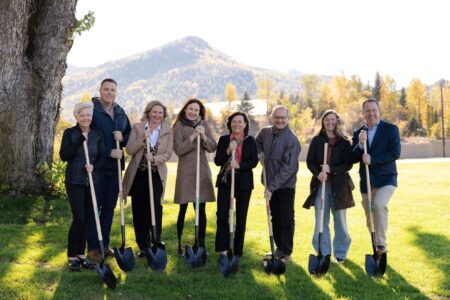Of sewers and streetscapes and six million dollars
The slow-motion makeover of Rossland’s downtown core took another small step forward last week, with a council decision to request up to $400,000 in provincial support toward the replacement of the sewer infrastructure beneath Washington Street.
The Towns for Tomorrow program funds 80 per cent of the cost (up to a $400,000 maximum) toward healthier, more sustainable infrastructure for communities with populations below 5,000. The tricky bit is that Rossland already received the maximum grant through the program in 2009 to help replace the Topping Creek intake. But the city is applying for any and all available funds to reduce the burden to taxpayers for what promises to be a rather expensive undertaking.
Sewers are not the most scintillating of topics, perhaps. They are also costly to replace. That’s a dangerous combination with an inevitable result in a small, old city. Components of the sewer system are 50 to 100 years old, featuring cracking clay lines and a looming capacity issue. Better storm water management is also required.
A sewer system upgrade is an item long on the wish-list of Mayor Greg Granstrom (Warfield’s public works foreman in a previous life) and a self-described “nuts and bolts” type politician. So the Telegraph teased him into talking about flowers.
“We will talk about flowers and benches as we move ahead with the engineering,” he said. “Once the underground is done, we can proceed and involve everyone in the pretty stuff.”
It’s a reference to the fact that the project’s scope has now moved somewhat beyond sewers. In fact, it technically began as a simple road repaving notice by the Ministry of Transportation (MOT), which decided last year to replace the asphalt along Highway 3B. Since that highway (Columbia Avenue) also serves as Rossland’s main drag, it make sense to fix the pipes beneath–and the streetscape above–while the province is paying a portion of the repaving cost. But Columbia Avenue pipes are connected to Washington Street pipes, which must handle additional load from new housing at Red, and potential future development of the long-vacant and under-utilized Emcon site.
Though no one seems keen to talk timing at this early stage, the Columbia Avenue repave has been postponed until at least summer 2011 while project costs and possibilities are being worked out.
The Columbia and Washington engineering, sidewalks, asphalt, water, sewer and storm system upgrades could cost up to $6 million, an amount the city is currently seeking approval from citizens to borrow on a 15 year term through an alternate approval process (AAP), which requires 10 per cent of citizens to register their opposition (to the proposed borrowing structure, not to the project) to by February 10. Forms and information about potential property tax impact are available on the city’s website.
Any cosmetic improvements that may come out of the design charrette exercises held earlier this year will not be funded through borrowing, Rossland administrator Victor Kumar committed at the Jan 10 council meeting, calling councillor Laurie Charleton “irresponsible”for publicly implying that that the city was borrowing $6 million to pay “for flowers, benches, etc.”
The $6 million figure is the project maximum, and borrowing will likely be substantially reduced by amounts the city is able to contribute through grant funding and reserves. Some small portion of development cost charge revenues from Red can likely be applied to the Washington Street sewer portion, though rules are strict on the use of these funds and must be spent on costs directly attributable to that development. The city does not have enough DCC revenue to pay for the entire (estimated $3 million) Washington Street component of the project and the required upgrades cannot be attributed entirely to development at the ski hill as the pipes also support housing in the downtown core and their age and condition is a key factor in the proposed system upgrade.
Feedback from the design charrettes will not be finalized for public presentation until the close of the AAP process, when the city can be confident that the community supports the proposed financing. At least one more public meeting with the MOT is planned should the borrowing be approved, according to city staff.
The mayor is hopeful.
“What I hear mostly (from the community) is that people are aware of the fact that we have ageing infrastructure,” said Granstrom. “It’s vital to the community.”























